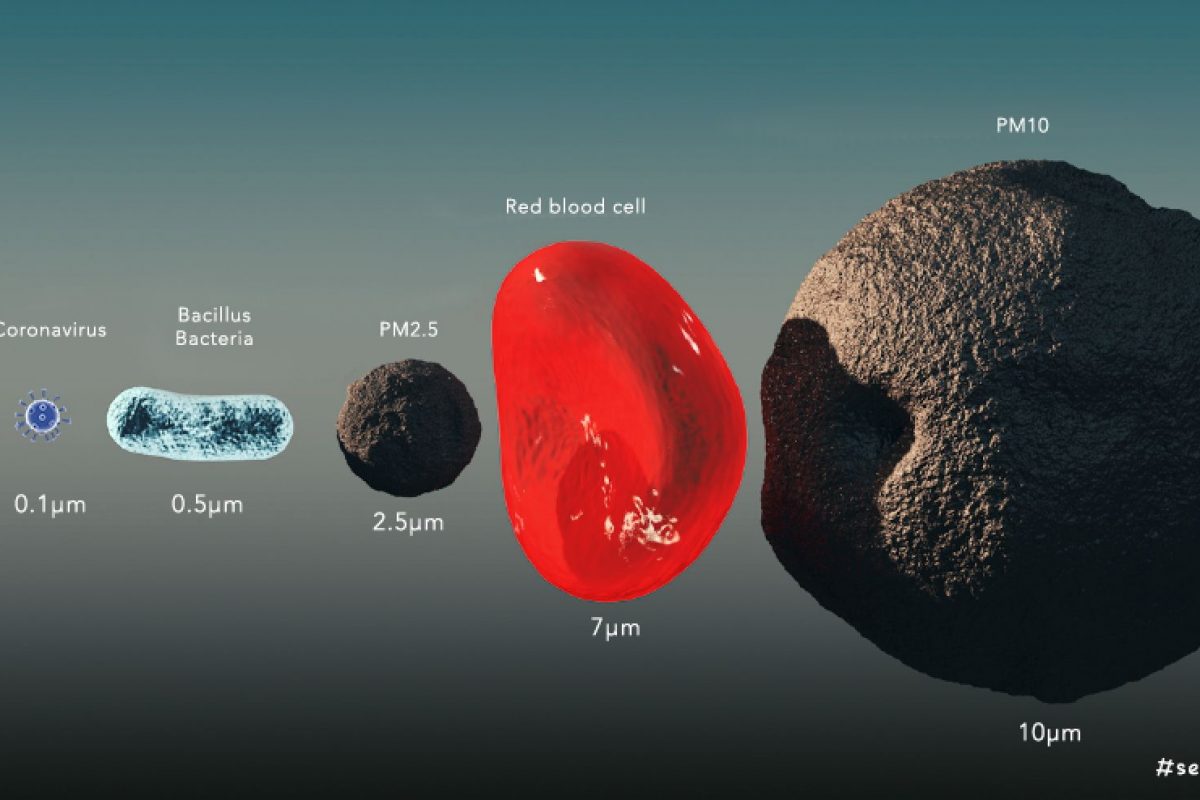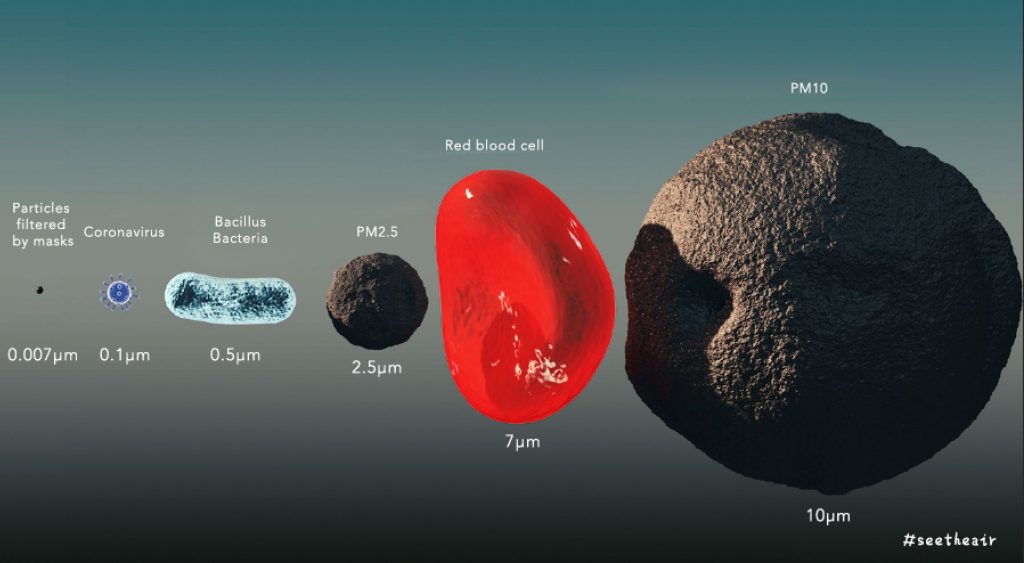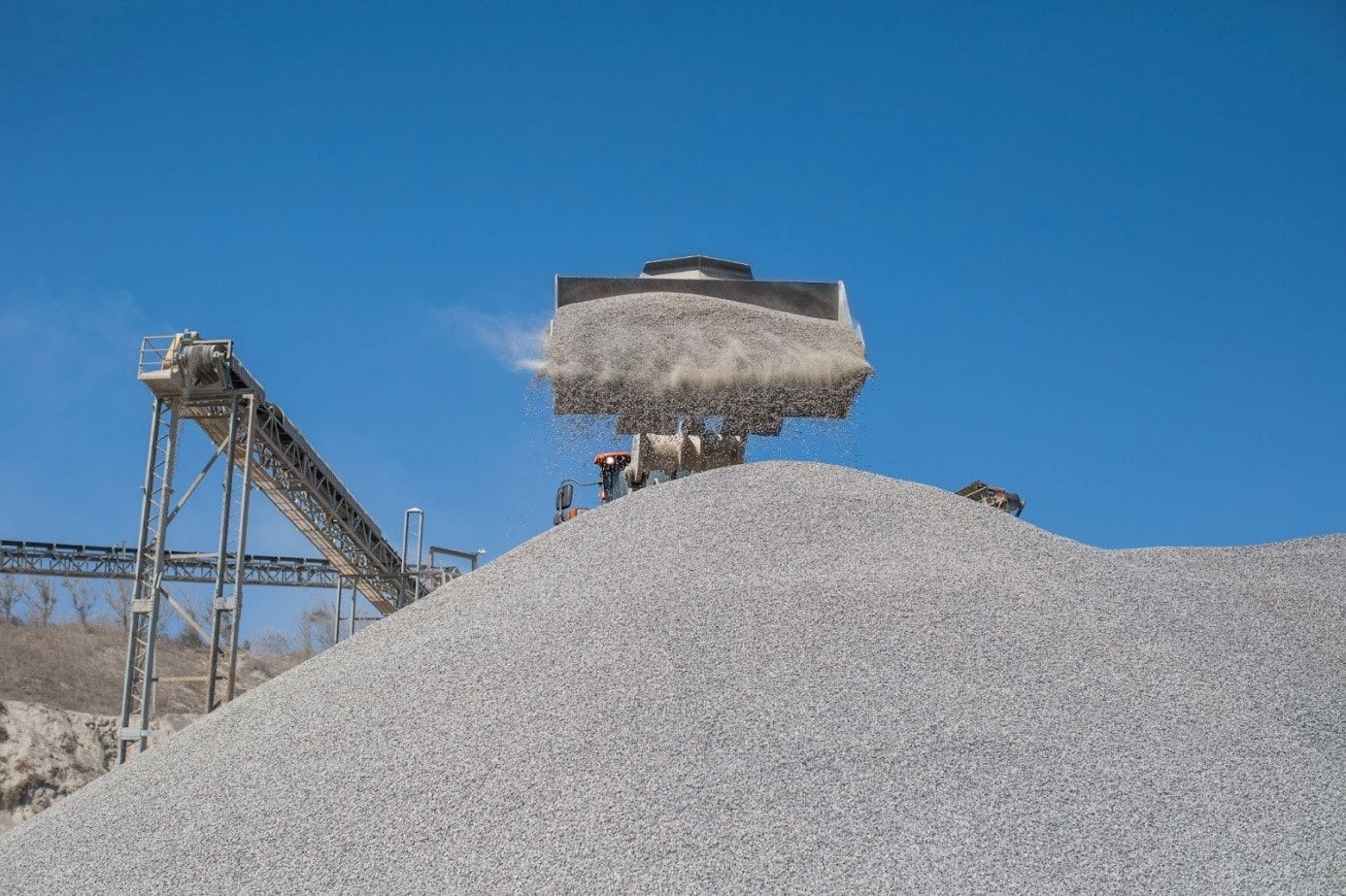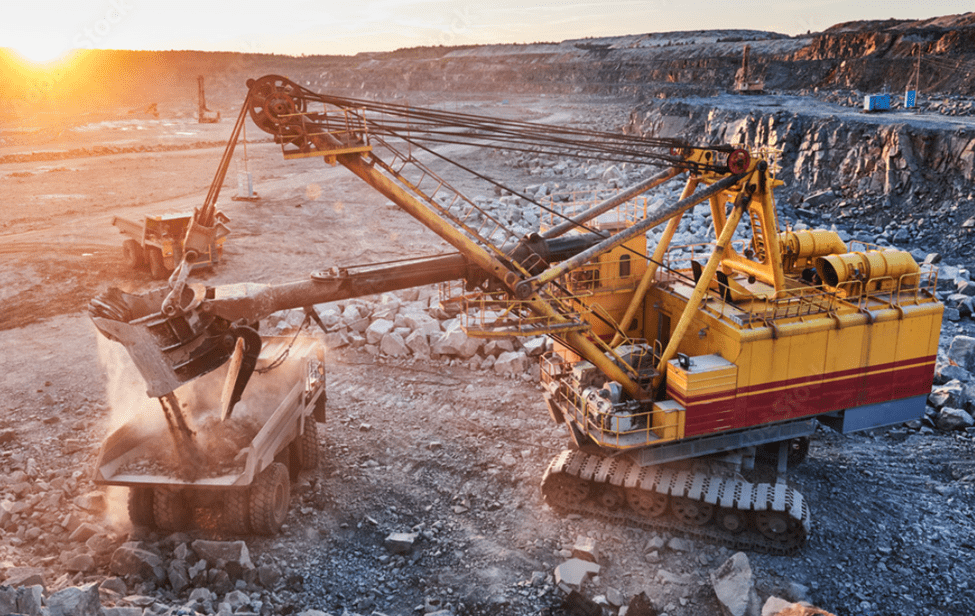How large is a corona virus virion compared to the MP10-2.5?
Virions (or “particles”) of coronary viruses are spherical particles between 0.06 micron and 0.14 micron in diameter, averaging about 0.125 micron, measured by electron microscope (Zhu et al, 2020). This means that coronavirus particles are smaller than PM2.5, but larger than some dust and gas particles (Figure 1).
Does higher concentrations of PM10-2.5 increase COVID-19 contagion rates?
On 20 March 2020, Setti et all published a study at the Italian Society of Environmental Medicine (SIMA), in which they found a linear relationship with R=0.98 between PM10 levels above 50 microns / m3 and the rate of spread of COVID-19 in Italy. These results are fully consistent with scientific studies on the spread of viruses and bacteria in the population by suspended particles, which correlate the incidence of viral infections with the levels of atmospheric particles (PM10 and PM2.5). (Ciencewicki J. et al., 2007; Sedlmaier N., et al., 2009).
The Italian experience indicates a direct relationship between higher levels of particulate matter PM10-2.5 and higher levels of VOC-19.
Figures 2 and 3 show that for every 50 μg/m3 increase in the daily average, the logarithmic infection rate increases by 0.234%. That is to say that at average PM10 levels of 350 μg/m3 , our infection rate will be twice as high as at levels below 50 μg/m3 , as can be seen among the different infection curves observed in the regions analysed in the Italian publication, in which the high infection rate in Lombardy in the other Italian regions stands out.
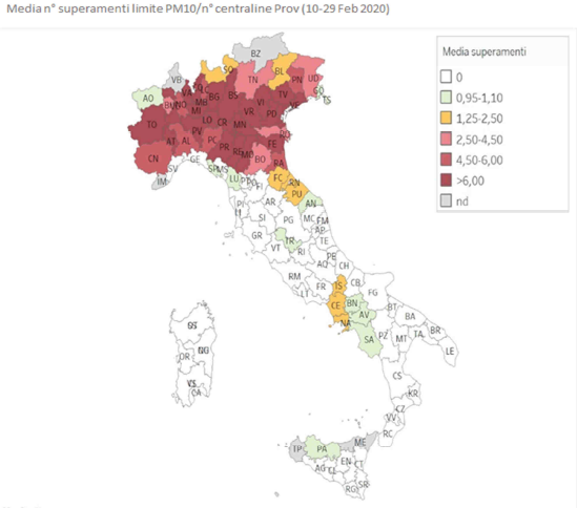

How can we reduce the risk of infection for our workers and communities?
ABCDust is committed to supporting the health and safety of workers and the general public during the global coronavirus epidemic.
Covid-19 is a public health emergency for which health care institutions and health care workers around the world are preparing. Workers in active industries must be confident that their work environment is safe as the disease continues to spread. It is vital that we, as a company, are properly prepared and trained to respond to the threat by sharing useful information. Considering this new information, ABCDust recommends that in addition to following the hygiene, prevention, social distance and sanitation measures recommended by the health authorities, the following additional measures be evaluated:
- Increase the recommended MP10-2.5 attenuation from 85% to 90-95% of critical areas, such as the mining area and the dry zone of a site, for which ABCDust has DMS-DS and DMS-TDS additives to help suppress 90-95% of the dust, as well as dust control cannon equipment, which continuously monitors extreme levels of MP10-2.5.
- Continuous monitoring of PM 1- 2.5 levels in reception areas and staff work and night areas, ensuring compliance with the limits and maximum values required by regulations, integrating real-time warning systems for staff, for the timely use of N95 personal protection masks or equivalent, in the event that the regulatory values of PM 2.5 are exceeded. To this end, ABCDust offers its line of multi-channel sensors and its DMS- ONE dust management platform.
- Improve operational excellence in terms of preventive maintenance of encapsulation systems, filters, and site air conditioning, to prevent high pollution events that force you to stop/reduce production rates. Contact us to find out how our products, equipment and services can help you fight against COVID-19 in your company or work environment, and how to reduce the risk of infection for our workers and communities.

